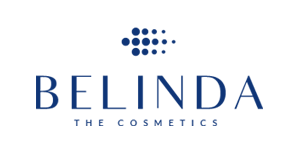The Complete Guide to the ISO 50001 Certification Process
In today’s business landscape, energy efficiency has become a crucial focus for companies aiming to reduce operational costs and minimize environmental impact. The ISO 50001 Certification Process offers organizations a structured pathway to implement an Energy Management System (EnMS) that meets global standards. This certification not only improves energy performance but also helps companies demonstrate their commitment to sustainability.
What is ISO 50001?
The ISO 50001 standard is a globally recognized framework designed to help organizations systematically manage and improve their energy performance. By achieving certification, businesses can ensure compliance with international energy management best practices and enhance their reputation among stakeholders. The ISO 50001 Certification Process involves several steps, all aimed at establishing a sustainable and efficient energy management system.
Why Pursue ISO 50001 Certification?
Cost Savings: Reduced energy consumption leads directly to lower utility bills.
Compliance: Ensures adherence to regulatory and legal requirements related to energy usage.
Sustainability: Demonstrates your company’s commitment to environmental responsibility.
Competitive Advantage: Certification enhances credibility with clients and partners.
Continuous Improvement: Helps establish processes for ongoing energy performance enhancements.
Key Steps in the ISO 50001 Certification Process
1. Understanding the Requirements
The first step is familiarizing yourself with the requirements outlined in the ISO 50001 standard. These include:
Establishing an Energy Management System (EnMS).
Setting measurable energy objectives.
Regular monitoring and improvement of energy usage.
2. Gap Analysis
Conduct a gap analysis to identify where your current energy management practices fall short of ISO 50001 requirements. This step helps prioritize areas that need improvement.
3. Documentation Development
Develop comprehensive documentation, including:
An energy policy statement.
Defined energy objectives and targets.
Detailed action plans to achieve these targets.
4. Implementation of the EnMS
This involves:
Training employees on energy management practices.
Establishing procedures for energy data collection.
Integrating the EnMS into daily operations.
5. Internal Audit
Perform an internal audit to ensure your EnMS complies with ISO 50001 requirements. This step identifies any gaps that need addressing before the certification audit.
6. Certification Audit
The certification process typically involves two stages:
Stage 1 Audit: A preliminary assessment by an accredited certification body to review documentation and readiness.
Stage 2 Audit: A comprehensive on-site assessment to verify compliance and effectiveness of the EnMS.
If successful, your organization will receive the ISO 50001 certificate.
7. Continuous Improvement
ISO 50001 emphasizes continuous improvement. Post-certification, companies are expected to:
Regularly review energy performance.
Conduct periodic audits.
Update energy objectives as needed.
Industries Benefiting from ISO 50001 Certification
ISO 50001 Certification is applicable across various sectors, including:
Manufacturing: To optimize energy-intensive processes.
Construction: For sustainable building practices.
Retail: To manage energy usage across multiple locations.
Healthcare: To reduce operational costs and comply with sustainability goals.
Transportation and Logistics: For fuel efficiency and reduced emissions.
Benefits of ISO 50001 Certification
Enhanced Energy Performance
Implementing an EnMS helps organizations systematically reduce energy consumption and costs.
Improved Brand Image
Demonstrating a commitment to sustainability enhances stakeholder trust and strengthens brand reputation.
Legal and Regulatory Compliance
Stay ahead of energy-related regulations and avoid potential penalties.
Operational Efficiency
Streamlined processes lead to better resource utilization and reduced waste.
Competitive Advantage
Certified organizations gain a market edge, attracting environmentally conscious customers and partners.
How to Get Started
Achieving ISO 50001 Certification may seem challenging, but with the right approach, it can become a seamless process. Here are some tips to get started:
Engage Stakeholders: Involve key personnel from various departments to foster a culture of energy efficiency.
Choose the Right Partner: Collaborate with an experienced certification body to guide you through the process.
Invest in Training: Equip your team with the knowledge and skills needed for successful implementation.
Leverage Technology: Utilize energy management software to monitor and analyze energy usage effectively.
Call to Action
Ready to transform your energy management practices and achieve certification? Partner with our experienced team to guide you through the ISO 50001 Certification Process. Contact us today to take the first step toward energy efficiency and sustainability.
- Get Your Legal Advice
- All Experts Lawyers
- All Experts Lawyers
- Great Discounted Rates
- Fighting for The Average Joe
- Get The Money You Deserve
- All Experts Lawyers
- Justice For All


Point of View
Our Vision
A lawyer or attorney is a person who practices law, as an advocate, attorney, attorney at law, barrister, barrister-at-law, bar-at-law, civil law notary, counsel, counselor, counselor, counselor at law, solicitor, chartered legal executive, or public servant preparing, interpreting and applying law, but not as a paralegal or charter executive secretary. Working as a lawyer involves the practical application of abstract legal theories and knowledge to solve specific individualized problems, or to advance the interests of those who hire lawyers to perform legal services.

